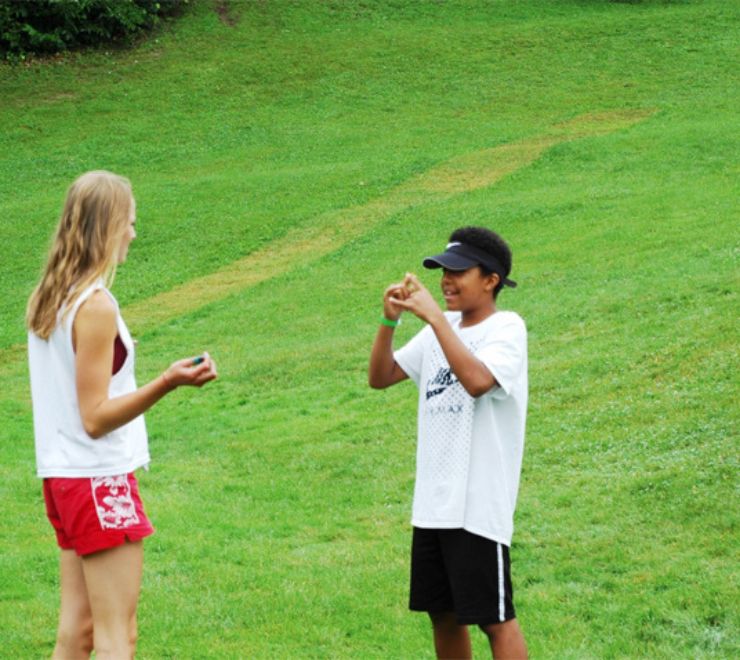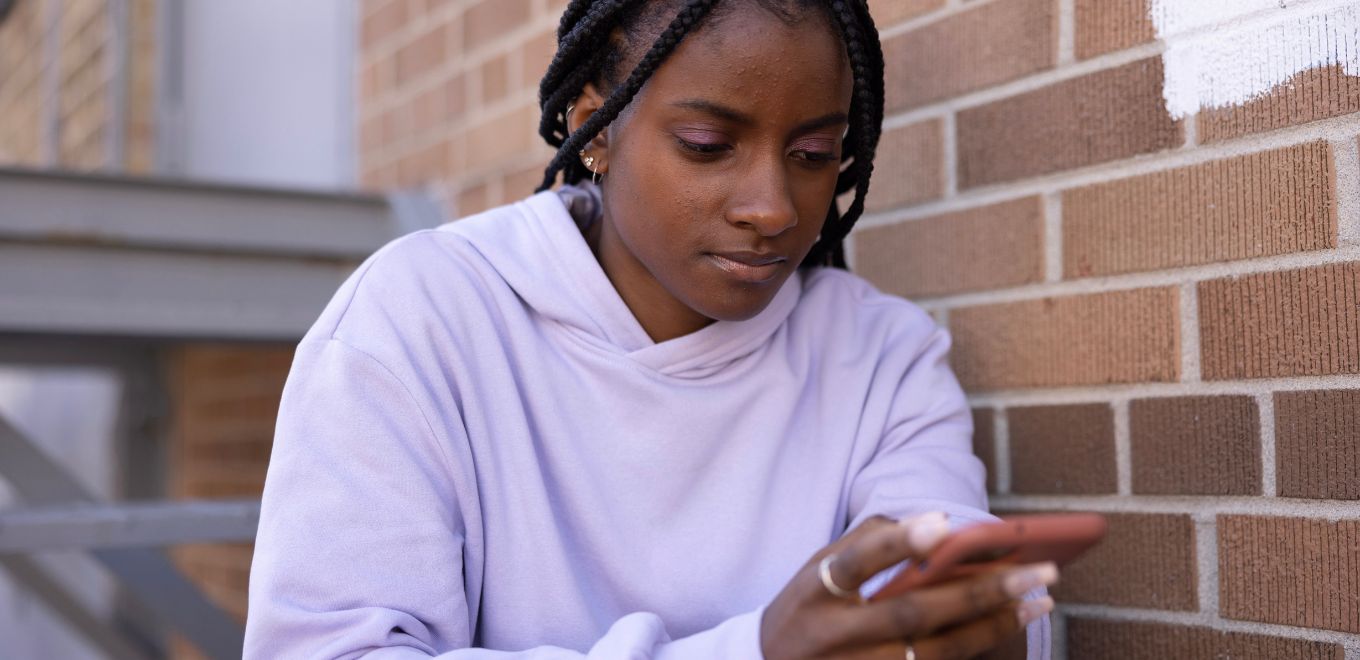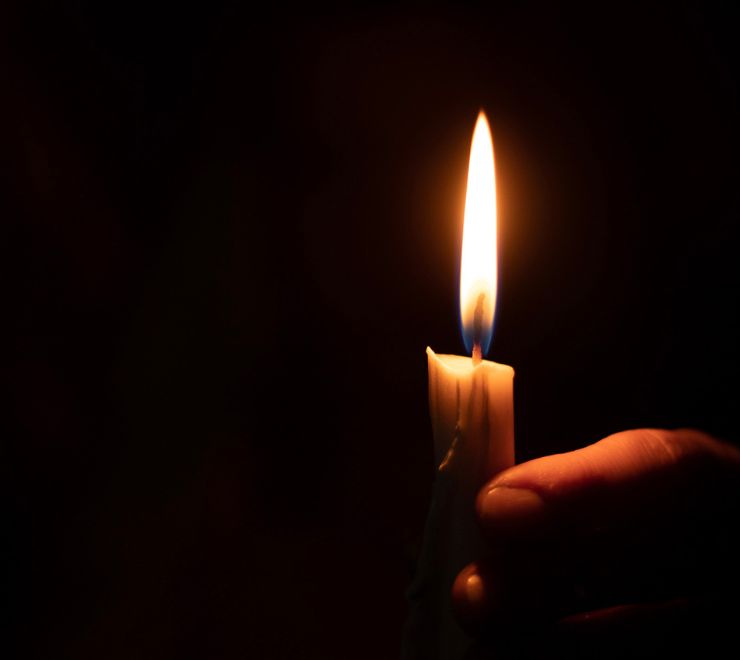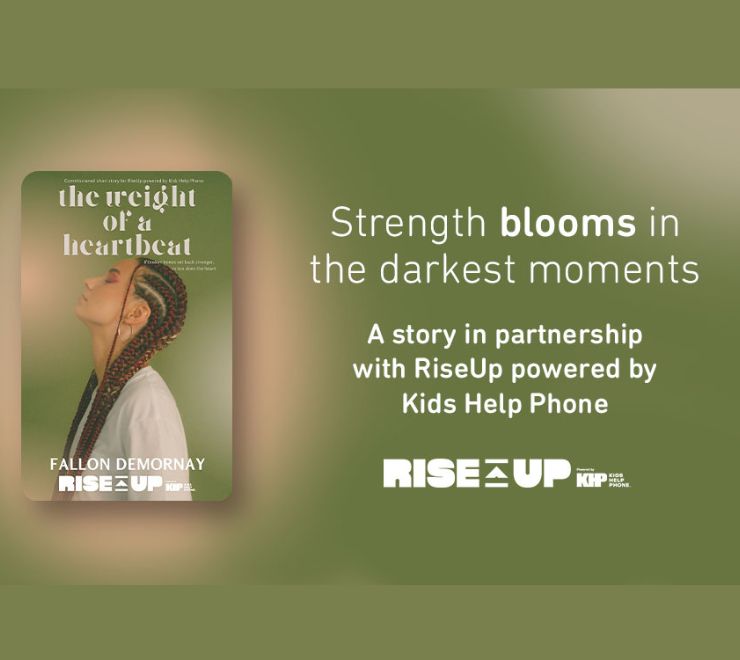Photo credit: Shiann Croft
Tanya Turton (she/her) is a Toronto-based entrepreneur, mental health advocate and wellness educator. She’s the founder of Adornment Stories, a non-profit that creates spaces for Black women and femmes* and non-binary people to focus on their wellness and healing through art, community and digital storytelling. Their programs provide opportunities for youth to be leaders in their community. Here, Kids Help Phone interviews Tanya to learn about her motivation behind founding this collective and the importance of offering spaces where Black folks can thrive.
*The word femme is an inclusive term used in the 2SLGBTQ+ community to refer to people who identify as various genders (non-binary, gender non-conforming) and other identities. The definition of the word continues to change, and each person may identify with it in different ways.
Check out the interview below:
What is adornment? What does it mean to you?
When I think about adornment I think — very literally — about the practice of adorning our body. That can be everything from makeup to hair, to perfume, to the clothing we wear. Anything that we are adding to our canvas is a practice of adornment. It isn’t about traditional or stereotypical constructs of beauty.
Through the practice of adornment, we’re able to tell a story so people can better understand how we see ourselves internally.
Can you share a bit about what inspired you to get started?
My journey has been organic and comes from my own lived experiences.
When I was really young — around eight years old — my older sister spent a lot of time practising adornment for herself. Makeup, hair, the whole process and ritual of getting ready. I remember sitting on the toilet seat watching her and being mesmerized by that experience.
My sister died by suicide when I was 11 and I remember what it felt like for me when she passed. When I think about her life and some of what she left me with, it’s through adornment and the ways we were able to connect over that process. That’s where the original idea started for me.
Adornment Stories began as a workshop that I ran in Toronto, New York and Detroit. I was amazed at how many other people had similar stories to me. In Detroit, I vividly remember when one person shared a story of when their grandmother was in hospice care and the relationship that existed between her and her lipstick. There was a moment of connection they were able to have through adornment during this really hard time. Particularly for Black folks and people of colour, adornment has its own experiences of ancestral wisdom and knowledge.

Pictured: the 2019 Adornment Stories Cohort
Photo credit: Rhandy Adolphe
I think a lot of mainstream conversations about mental health and wellness can feel inaccessible to some folks because the language being used isn’t always easily understood or inclusive of everyone. I also believe there’s a misconception that Black folks aren’t talking about their mental health. I remember how much my sister valued the process of adornment and I think about what it would have looked like to have programs and spaces at that time that could have met her where she was at, using language and tools that would have connected to her. For example, the practice of doing your makeup can be a meditative, quiet and reflective time. The way that folks talk about their wellness doesn’t always look the same.
At Adornment Stories, we’re talking about mental health, but we’re also using adornment as a bridge and a tool for having hard conversations in hard moments.
Everyone sees the world through a unique lens and experience. Mental health dialogue can be fluid and you get to decide what works for you and what doesn’t.
This space is much needed and the conversations about wellness — particularly for Black women and femmes — require allowing for an understanding of history, culture and language that folks can connect to.
What kinds of creative formats are used in your programs?
Going through Adornment sessions, participants create a five-image exhibit using digital photography. One of the requirements of this is a self-portrait that features adornment. And this is because I really want to encourage people to think about the idea of adornment — not from a place of beauty or society’s perceptions — but an opportunity to think about storytelling. In the Black community traditionally, the way we wear makeup and even the different colours mean different things and that’s part of storytelling. This practice is less about specific ideas of beauty and more about feeling powerful in ourselves and telling stories of who we are.

Photo credit & pictured: the 2020 Virtual Exhibit for Adornment Stories by Sanique Walters
One of the goals of Adornment Stories is “to build collective care spaces that remind people there is no need to simply survive, we can thrive.” Can you share what that means to you?
Collective care spaces are super important because in a culture that has been yelling “self-care” at us, people may start feeling this pressure like the only way a person can experience wellness is if they figure it out and find a cheat code to do it on their own. I believe that self-care is best done and most effective in collective care environments.
When the folks and the environment around us are conducive to the care that we need for ourselves, it’s a reminder that we don’t do it by ourselves.
Many of us in Black communities come from households that were in survival mode. For myself, my mother and grandmother didn’t have the luxury to have some of these conversations about wellness. It just wasn’t possible while trying to navigate anti-Black racism in that time and context.There were certain things that people had to do, and it was not safe to do anything otherwise. For many of us, particularly millennials, we’re now in a different place where we can have conversations about thriving and not just focus on the bare minimum of survival because we have luxuries that Black folks never used to.
For me, thriving is a conversation about quality of life and feeling entitled, and I say this intentionally. As a queer, Black woman, it hasn’t felt possible to feel entitled. That sounds simple but it’s a radical concept for so many.
A lot of how Black history has been presented starts from a place of trauma. What does it mean to acknowledge that that’s not all we are? In our human nature there’s beauty and gifts and it’s a birthright for me to be thriving.
Why is it so important to create spaces specifically for Black folks to connect about wellness? What have you learned while witnessing these events and holding space for your community?
The biggest shift that I’ve seen (and why I do this work) is witnessing people who start to believe in themselves. I’ve seen folks enter the program from a place of not ever having the opportunity to show up as their full selves. There are spaces where they’ve had to be fragmented. For example, there are spaces where folks can show up in the identity of woman and be celebrated, but their Blackness isn’t celebrated. Or they can show up in spaces where their Blackness is celebrated, but not the concept of them being a woman, etc.
What happens is transformative when a person shows up with their full identities and are loved and cared for as who they are.
There are tangible skills that come from our workshops (like learning photography, public speaking, etc.) that are confidence building, but this only happens because people can show up as themselves. There’s magic in allowing people to be who they truly are. I think that’s the foundation work that makes everything else possible. Folks can take up space in ways they didn’t feel comfortable before and feel more connected to who they are.
Transformation takes time and showing kindness can allow people to see their humanity.

Pictured: the 2019 SACRED community event
Photo credit: Fonna Seidu
Do you have any tips for young people who are looking to create joy and/or incorporate wellness into their own lives? What are small steps people can take?
Allow yourself to find your joy and to explore in natural, trial and error environments.
Allow yourself to be open minded and give yourself permission to play and see what you like.
The best way to figure this out is to allow yourself to dabble and try different things without the expectation of being good at it or turning it into a career. Social media can send us a lot of messages about this, but not everything we love to do has to bring popularity or influence. Also, give yourself permission not to do things you don’t enjoy.
It may be something like “I think I like music. What would happen if I took some time to listen to music and see if it brings my mood up? Do I feel better? More connected? What would happen if I tried to play music?” You may discover that you just like to listen to music and that’s what brings you joy, but that’s part of the experimental process.
I really believe in individualized wellness plans. One of the first things we do at Adornment is create a self-care jar. This is a jar filled with pieces of colourful paper, each one with something you like to do. Things are going to come up and during those moments it’s difficult to remember what you like to do. Pre-planning can help us cope through that moment. By preparing and having things set up like a jar with self-care ideas, it can be as simple as pulling a piece of paper out. “This paper says I enjoy going on walks or I like to read, I can do this right now.” Sometimes we can simply forget that there are things we do enjoy. The visual of seeing a jar filled with paper can remind of us that there are things that do bring us joy.
You can learn more about Adornment Stories and find resources to support your wellness here.
Kids Help Phone would like to thank Tanya Turton for sharing her story in support of youth mental health and well-being across Canada!










